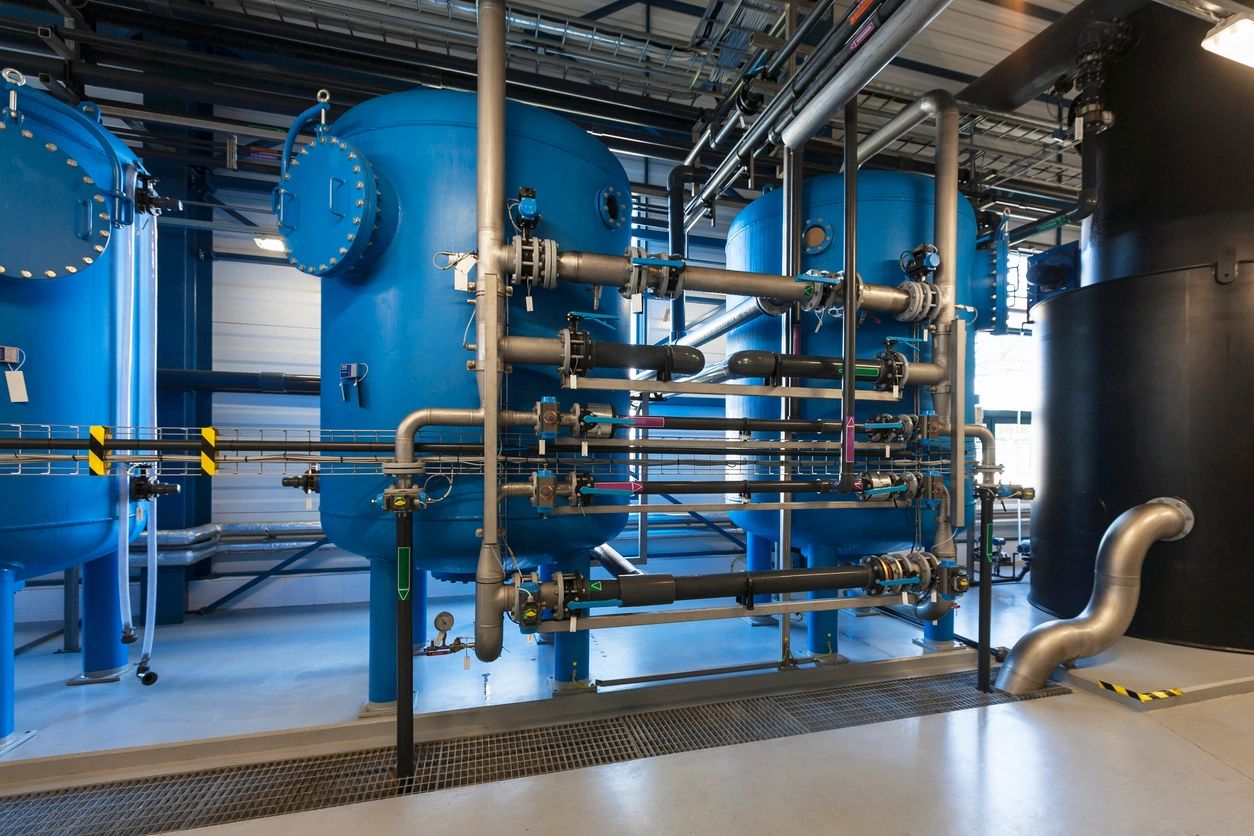Chlorine dosing, What is it, and is it in our water?

Chlorine dosing is intended to establish free chlorine residual in a water distribution system.
A free chlorine residual is effective against most bacteria (including Legionella), harmless to humans (when within guideline values), and can be used in hot, warm, and cold water distribution systems.
Important
Important Chlorine dosing introduces new risks into your water distribution system and should be carefully considered prior to any installation and/or operation.
Chlorine is a powerful oxidizing agent and concentrated chlorine solutions should be handled and used with appropriate containment by competent personnel with suitable personal protective equipment.
Installation of chlorine dosing equipment should be undertaken by a qualified and competent professional, such as a water treatment specialist.
Chlorine and free chlorine residual
Chlorine and free chlorine residual Chlorine is a disinfectant commonly used by water utilities.
Free chlorine residuals of between 0.5‒2.0 mg/L provide effective continuous disinfection in water distribution systems.
Facilities that receive water from a registered drinking water service provider should ideally receive free chlorine residual of between 0.2-0.5 mg/L in their water supply.
However, the drinking water service provider is not required to maintain a minimum free chlorine residual within the water supply and factors such as pipe length and chlorine demand mean that the actual concentration of free residual chlorine may be less than 0.2 mg/L when the water reaches your facility.
It is reactive and not particularly penetrative, which may result in the re-colonization of your water distribution system with Legionella when the residual falls below an active concentration.
Chlorine is usually dosed as a concentrated solution of sodium hypochlorite which, when dissolved in water, forms hypochlorous acid.
Hypochlorous acid is the active disinfectant form of chlorine often described as ‘free’ or ‘active’ chlorine.
An important component of chlorine dosing is maintaining a pH of 7.5 which ensures effective disinfection.
Selection of dosing point(s) into a water distribution supply will require consideration of your water distribution system and should be undertaken by an individual who has a sound knowledge of the facility’s water distribution system and/or a specialized and qualified professional, such as a licensed plumber or hydraulic engineer.
Measuring and recording chlorine levels Should be recorded in accordance with your water risk management plan and include details of where, when, the concentration of chlorine, by whom, and any additional comments.
Free and total chlorine levels can be measured with test strips or more accurately with a photometer but if you have any doubts please get in contact with us here at Jila Water on our website www.JilaWater.com.au or email us at [email protected] or call 1300 30 10 37.
Chloraminated water supply The Mt Crosby Water Treatment Plant in South East Queensland supplies a large proportion of the drinking water used in Brisbane and Ipswich.
Chloraminated water supply
What is chloramination?
Chloramination is an alternative means of providing a residual disinfectant that is used in some parts of Brisbane and elsewhere. A small quantity of ammonia is added to chlorine after the disinfection process to form a long-lasting disinfectant called monochloramine.
Unlike most other Queensland drinking water supplies, Mt Crosby water is chloraminated, rather than chlorinated.
This means that some SEQ drinking water retailers are exclusively supplying chloraminated drinking water, some supply only chlorinated water while some supply chloraminated water for part of the year and chlorinated water at other times.
If your facility is in SEQ, it is highly recommended you ask your drinking water service provider, which type of disinfectant is provided in your drinking water supply because this will affect any proposed chlorine dosing to be undertaken.
Chlorine concentrations in a drinking water supply should not exceed the Australian Drinking Water Guideline (ADWG) value of 5 mg/L.
If chlorine dosing increases the free chlorine residual level above 5 mg/L, the water distribution system must be flushed before it can be returned to use as a drinking water supply.
Caution Chlorine becomes less soluble with increasing water temperature.
Chlorine disinfection is compromised by ultra-violet (UV) disinfection.
Chlorine is corrosive at concentrations above 5 mg/L (corrosiveness increases incrementally with the concentration of chlorine dosed) and at pH below 7.0.
It may cause damage to components of the water distribution system and should therefore be closely monitored.
So we know that was some heavy going and there were lots to take in, but basically what we think here at Jila Water with the unknown levels of what may be found in your water is better to be safe and have your water filter at your own home.
Having a Jila Water tech come out and check your home for suitability and run you through our 4 stages Whole House Water Filter system you can know what’s in your water and what your families drinking.
Contact us today via our website www.jilawater.com.au or email us at [email protected] or call 1300 30 10 37
For more information and greater detail check out the Queensland Health website.
Are you thinking of filtering your water at home? Then why not use one of the best whole-house water filter systems in Australia? Our Jila Water filter system removes chlorine and other chemical tastes, odours plus dirt, and sediments making water cleaner, clearer, and safer for your whole house. Request a free water test today!
Share this post
Recent Post
- The Dangers of Fluoride in Tap Water: Why Complete Home Water Filtration is Essential
- The Hidden Dangers of Fluoride and Chlorine in Brisbane’s Tap Water: Why Complete Home Filtration is Essential
- The Importance of Water in Maintaining a Healthy Gut
- The Importance of Water Testing & Identifying Contaminants!
- An Easy Guide to Choosing a Water Filter For Your Home
Categories








Product categories
Top rated products
-
Complete Home Water Filtration Solutions for Homeowners
Rated 0 out of 5$3,999.00 -
Complete Home Water Filtration Filter Change Kit
Rated 0 out of 5$349.00Original price was: $349.00.$279.00Current price is: $279.00.






